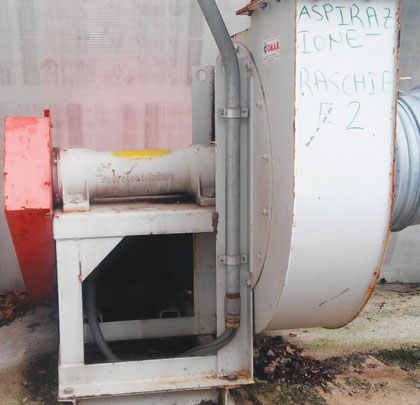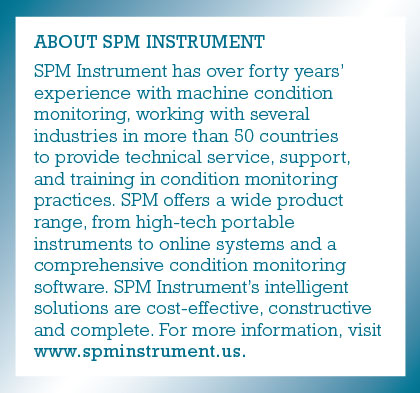VFD-driven, 15-kilowatt induction motor
EasyTool is a condition monitoring solutions provider with service and support representatives in Italy. Located in the town of Fabriano, in the province of Ancona, EasyTool represents ALL-TEST Pro instruments and performs regular condition monitoring services for a local paper manufacturer. Every three months, a field engineer travels to the paper manufacturing facility to test their equipment, including fans, motors, rollers, and gear boxes. Data is collected four times throughout the year for trending and predictive analysis to support the paper manufacturer’s safety and equipment reliability programs. In September 2016, Ettore Di Pasquale, field engineer, used a multi-technology approach to properly diagnose an issue with an induction motor.
THE APPLICATION
A VFD-driven, 15-kilowatt induction motor was used to drive an industrial fan on a drying section hood of a machine that produces paper. While the machine produces paper, this industrial fan extracts the fumes from the machine and sends them through a filter before releasing the exhaust out to atmosphere.
WHEN VIBRATION ANALYSIS AND ELECTRICAL SIGNATURE ANALYSIS DISAGREE
The initial vibration analysis showed high vibration values (see figure 1) and a spectrum which could have been interpreted to be motor unbalance (see figure 2). Even though the first portion of the spectrum looked similar to an unbalance pattern, the field engineer knew to continue investigating investigating.
Speed was measured with a strobe and showed that the revolutions per minute (RPM) had been changing very quickly—even though the VFD was set to run the motor at a fixed speed of 1,470 RPM. Seeing the speed of the induction motor change rapidly is indicative of broken rotor bars.
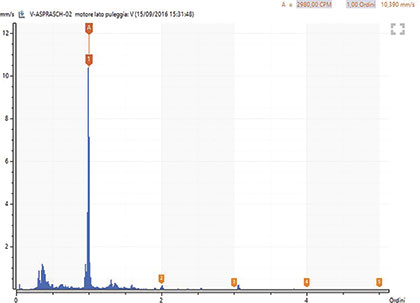
Figure 1. Portable data collector detected high values of vibration at 1X as shown in the spectrum.
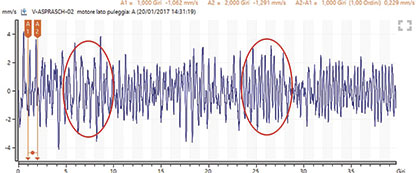
Figure 2. The time waveform in the axial direction showed signs of frequency modulation.

FFT bandwidth was 37.5 RPM and PPF was 63.4 RPM. The spectrum did not show evidence of PPF sidebands around 1X and harmonics.
At this point, the field engineer continued with his multi-technology approach and performed an Electrical Signature Analysis with the hand-held ALL-TEST PRO On-Line II™ energized motor testing instrument to investigate the condition of the motor’s rotor bars.
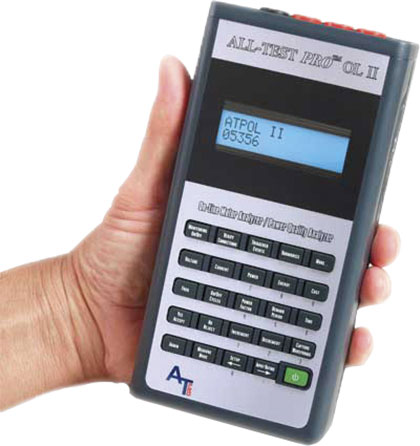
ALL-TEST PRO On-Line II™
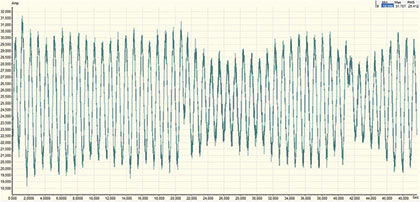
Figure 3: ESA showed very strong variations of motor current confirming speed variations with current amplitude modulation of 30 percent.
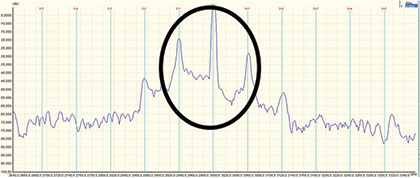
Figure 4: ESA confirms broken rotor bars with values of PPF sidebands of -20 db related to severe damage (condition 7).
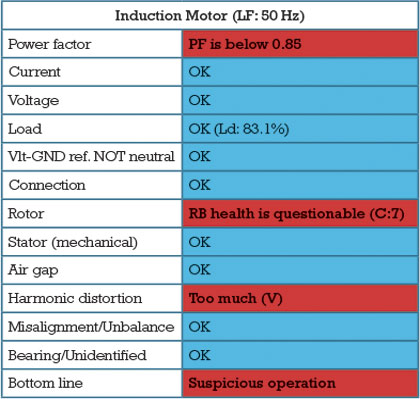
Figure 5: ATPOL II™ displays results “RB health is questionable (C:7)”. As shown in the table, C7 reports severe damage to the rotor bars.
ELECTRICAL SIGNATURE ANALYSIS CONFIRMS BROKEN ROTOR BARS
Electrical signature analysis (ESA) is a diagnostic technology that uses the motors supply voltage and operating current to identify existing and developing faults in the entire motor system. When in ESA mode, the ATPOL II™ evaluates the condition of incoming power, the control circuit, the motor itself, and the driven load. The ESA of this induction motor showed significant variations in current (see figure 3—when the motor speeds up, it draws more current; when it slows down, it draws less current). The large fluctuations in current varied about 30 percent because the motor was varying load due to speed variations.
PREVENTING MOTOR FAILURE AND KEEPING EMPLOYEES SAFE
The field engineer reviewed his comprehensive analysis with the paper manufacturer’s predictive maintenance and reliability manager, and the suggestion was made to replace the motor. A new motor was promptly installed during a planned shutdown, and another vibration analysis was performed on the new motor to make sure it was working as intended.

Internals of motor with broken rotor bars (broken rotor bars are not visible in this picture).

Vibration analysis of the new motor showed that the vibration had significantly decreased. Where the original, damaged motor had shown high values of vibration around 11 mm/sec., the vibration analysis of the new motor showed values around 0.35 (30 times less vibration).
More importantly, the new motor was operating at a constant speed, ensuring the industrial fan could evacuate fumes from the paper production machine with consistent air flow. Maintaining speed and air flow for fume suction meant creating a healthy and safe work environment for the manufacturer’s employees.
LESSONS LEARNED
- If the broken rotor bars had not been detected, the motor would have failed. Motor failure would have led to unsafe working conditions inside the manufacturing facility. Condition monitoring and predictive maintenance (PdM) programs are very important initiatives that every manufacturer should implement.
- Vibration analysis, while very informative and important, does not always clearly identify motor faults. Vibration testing should be performed alongside Electrical Signature Analysis. It is critical to take a multi-technology approach when checking the condition of your motors, as one technology is usually not ‘enough’ to properly diagnose motor health.
- There are easy-to-use portable instruments, like the ALL-TEST PRO On-Line II™ energized motor testing instrument, that can help you check the health of your motors. The ATPOL II™ is an invaluable monitoring and diagnostic tool that can help you see what is really going on with your equipment. Make sure you have the proper tools to support your condition monitoring program. ◆
Richard Scott is general manager at ALL-TEST Pro, LLC. Since 1985, ALL-TEST Pro, LLC has provided industry with the most advanced predictive maintenance testing and troubleshooting tools for AC and DC motors, coils, windings, transformers, generators and more to a wide range of industries worldwide. With a full line of testing instruments, software, accessories and training programs, ALL-TEST Pro has the tools you need to perform advanced non-destructive motor testing and analysis for both de-energized motor circuit analysis and energized electrical signature and power analysis. The extensive capabilities of the instruments, coupled with dependable post-sale training and technical support, ensure improved productivity, reduced downtime and a rapid return on investment. For more information, visit www.alltestpro.com.
____________________________________________
MODERN PUMPING TODAY, February 2018
Did you enjoy this article?
Subscribe to the FREE Digital Edition of Modern Pumping Today Magazine!
![]()


